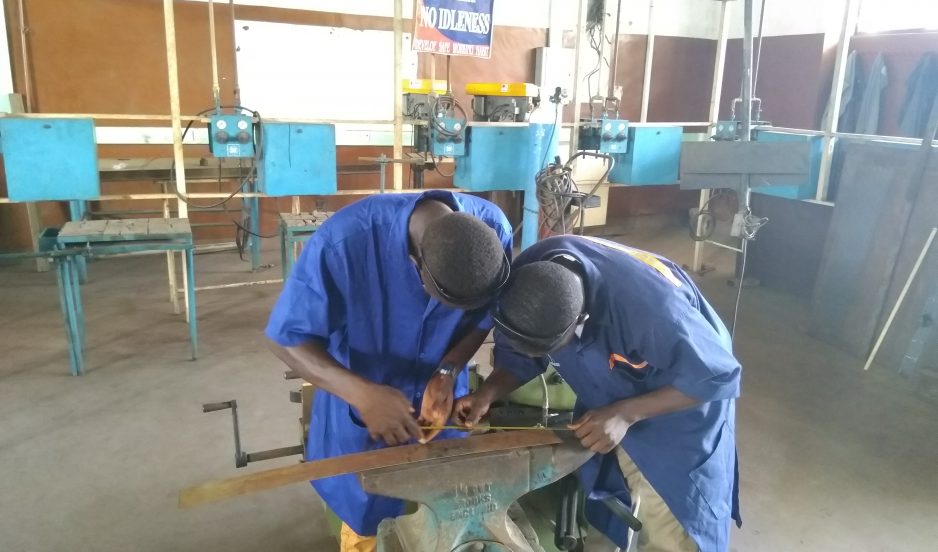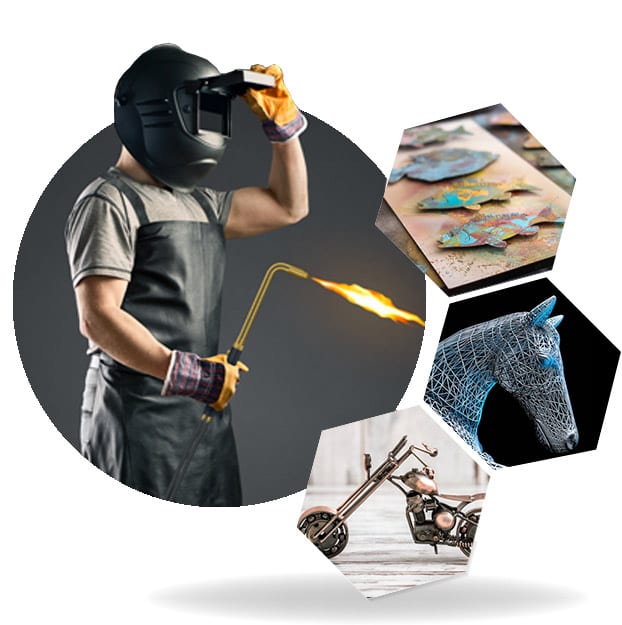Everything about Welding: Secret Insights Into Techniques and Best Practices for Success
Welding encompasses a variety of strategies, each matched for certain products and applications. Understanding these approaches, such as GMAW, SMAW, and TIG, is vital for achieving ideal results. The right tools and safety and security methods can not be forgotten. As preparation and fixing play crucial functions in the welding procedure, mastering these elements can significantly improve the high quality of the final product. What are the crucial aspects that guarantee a successful weld?
Comprehending Different Welding Techniques
Welding techniques encompass a selection of approaches, each matched to details applications and materials. Among one of the most typical techniques are Gas Metal Arc Welding (GMAW), Secured Metal Arc Welding (SMAW), and Tungsten Inert Gas Welding (TIG) GMAW, additionally referred to as MIG welding, is preferred for its rate and convenience, making it ideal for slim materials. SMAW, or stick welding, is preferred for its simplicity and effectiveness in outside settings, especially with thicker steels. TIG welding supplies precision and control, making it appropriate for intricate job and non-ferrous metals (Montana Mobile Welding and Repair). Each strategy has its special benefits and considerations, enabling welders to pick the most effective technique based on the job's requirements, material kind, and desired results. Recognizing these strategies is crucial for successful welding
Crucial Welding Devices and Devices
While various welding methods call for specific skills, the appropriate equipment and devices are just as necessary for achieving top quality results. Important welding equipment includes welding devices, which differ depending on the method-- such as MIG, TIG, or stick welding. Safety gear, including headgears, handwear covers, and aprons, warranties safety and security and comfort during the process. Additionally, clamps and fixtures help safeguard products in location, making sure precision in welds. Consumables like welding poles, wire, and shielding gas are additionally important elements that affect the top quality of the weld. Moreover, tools such as cutters and grinders help with surface prep work and post-weld completing, adding to an expert result. Purchasing high-quality tools inevitably boosts the efficiency and effectiveness of welding projects.
Security Practices in Welding
Proper safety techniques are necessary in the welding sector to secure workers from potential hazards. Welders have to use ideal personal protective tools (PPE), including helmets with appropriate shading, handwear covers, and flame-resistant garments. Sufficient air flow is important to minimize direct exposure to damaging fumes and gases generated throughout the welding process. Furthermore, employees ought to be educated in the correct handling of welding devices to stop crashes. Fire safety steps, such as keeping flammable materials far from the welding area and having fire extinguishers conveniently available, are necessary. Normal evaluations of devices and work areas can aid determine potential hazards prior to they lead to crashes. By sticking to these safety techniques, welders can create a safer working atmosphere and decrease threats connected with their trade.
Preparing Materials for Welding
Preparing materials for welding is a vital action that considerably affects the high quality and integrity of the end product (Montana Mobile Welding and Repair Belgrade Fabrication). Proper prep work entails cleaning up the surface areas to eliminate impurities such as rust, oil, and dirt, which can jeopardize the weld. Methods such as grinding, sanding, or using solvents are frequently used to attain a tidy surface area. In addition, making certain that the materials mesh well is vital; voids can result in weak welds. It's likewise essential to consider the placement and positioning of the elements, as this will affect the convenience of welding and the final end result. Choosing the suitable filler product and making sure compatibility with the base steels is necessary for achieving solid, resilient welds.
Tips for Getting High-Quality Welds
Achieving top notch welds requires interest to detail and adherence to finest methods throughout the welding process. Proper joint prep work is necessary, ensuring surfaces are clean and complimentary from impurities. Selecting the suitable filler material and welding strategy based on the base metals is critical for ideal bonding. Preserving consistent traveling rate and angle while welding can prevent issues and promote uniformity. In addition, managing warm input is crucial; excessive warmth can bring about warping and damaged joints. If required, consistently checking the welds throughout the procedure enables for immediate adjustments. Utilizing appropriate post-weld treatments, such as cleansing and tension alleviation, can enhance the durability and integrity of the weld, ultimately guaranteeing an effective end result.
Repairing Typical Welding Issues
Welding often presents obstacles that can impact the quality and integrity of the end product. Typical issues such as porosity, irregular weld beads, and getting too hot can emerge, each needing specific repairing methods. Comprehending these issues is important for welders to improve their skills and attain perfect outcomes.
Porosity Problems Discussed
Porosity can commonly be forgotten, it continues to be an essential problem in welding that can endanger the stability of a finished item. Porosity refers to the presence of little gas pockets within the weld grain, which can compromise the joint and lead to early failing. This problem usually emerges from impurities, moisture, or incorrect securing gas coverage during the welding process. To minimize porosity, welders ought to validate that the base products are clean and completely dry, use appropriate protecting gases, and keep constant welding parameters. On a regular basis inspecting the equipment and setting can also assist recognize potential issues before they manifest in the weld. Dealing with porosity efficiently is crucial for attaining strong, long lasting welds that satisfy top quality requirements.

Irregular Weld Beads
Inconsistent click to read weld grains can significantly affect the quality and toughness of an ended up product. Different factors contribute to this problem, including improper traveling speed, inaccurate amperage setups, and inconsistent electrode angles. When the welder relocates also rapidly, a grain might show up slim and do not have infiltration, while moving too slowly can trigger too much accumulation. In addition, utilizing the wrong amperage can cause either undercutting or excessive spatter, both of which compromise weld stability. The welder's technique, such as inconsistent lantern motion, can also bring about uneven grain appearance. To alleviate these problems, welders should concentrate on keeping steady, controlled motions and ensuring proper tools settings to accomplish harmony in their welds. Uniformity is vital to accomplishing strong and reputable welds.
Overheating and Bending Issues
Excessive heat during the welding procedure can bring about significant getting too hot and warping concerns, influencing the structural stability of the workpiece. These troubles usually materialize as distortion, which can endanger alignment and fit-up, making additional assembly testing. Variables adding to overheating consist of the option of welding specifications, such as voltage and travel speed, in addition to the kind of product being bonded. To reduce these concerns, welders must maintain constant traveling speed and suitable heat input while monitoring the work surface temperature. In addition, pre-heating or post-weld warmth treatment can help alleviate stresses triggered by quick air conditioning - Montana Mobile Welding and Repair Belgrade. Routine examination and adherence to finest methods are vital in preventing overheating and making certain the longevity and integrity of welded frameworks
Frequently Asked Inquiries
What Are the Occupation Opportunities in the Welding Industry?
The welding sector uses diverse occupation opportunities, including placements as welders, educators, designers, and assessors. Professionals can function in manufacturing, construction, aerospace, and auto fields, gaining from solid need and affordable salaries in various functions.
How Can I Boost My Welding Speed Without Sacrificing Quality?
To enhance welding rate without giving up top quality, one must exercise effective strategies, maintain equipment, enhance settings, and boost hand-eye coordination. Regular training and seeking responses can additionally considerably add to accomplishing much faster, premium welds.
What Qualifications Are Offered for Welders?
Many qualifications exist for welders, consisting of those from the American Welding Culture (AWS), the National Center for Building Education And Learning and Study (NCCER), and different industry-specific soldering copper wire organizations. These qualifications boost employability and show skill efficiency.
Exactly How Does Welding Impact the Properties of Metals?
Welding affects the residential or commercial properties of metals by modifying their microstructure, which can lead to modifications in hardness, ductility, and strength. Warm input and air conditioning prices during the process greatly affect these product attributes.
Can I Weld Dissimilar Metals With Each Other?
